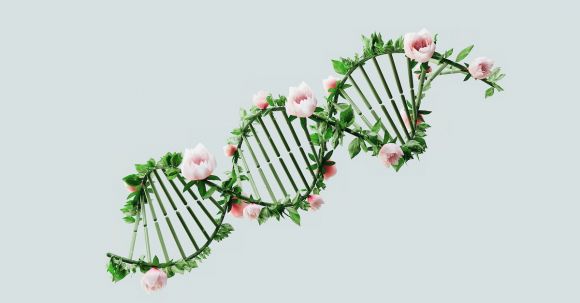DNA replication is a fundamental process that occurs in all living organisms. It is the mechanism through which DNA molecules are copied to produce new cells. This process is essential for growth, development, and reproduction. Although DNA replication may seem complex, it is a highly regulated and precise process that follows a series of steps. In this article, we will delve into the secrets behind DNA replication and explore the intricate details of this remarkable process.
Unraveling the Double Helix
Before we can understand the process of DNA replication, it is crucial to have a basic understanding of the DNA molecule itself. DNA, or deoxyribonucleic acid, is a double-stranded helical structure composed of nucleotides. Each nucleotide consists of a sugar molecule, a phosphate group, and one of four nitrogenous bases: adenine (A), thymine (T), cytosine (C), or guanine (G). The two strands of DNA are held together by hydrogen bonds between complementary base pairs: A with T and C with G.
Initiation: The Starting Point
DNA replication begins at specific sites along the DNA molecule called origins of replication. These sites serve as starting points for the replication process. In eukaryotic cells, which include animals and plants, there are multiple origins of replication along each chromosome. In contrast, prokaryotic cells, such as bacteria, have a single origin of replication.
Unwinding the Double Helix
Once the origins of replication are identified, an enzyme called helicase unwinds the DNA double helix. Helicase breaks the hydrogen bonds between the complementary base pairs, separating the two strands of DNA. As the DNA unwinds, it forms a Y-shaped structure known as the replication fork.
Building New Strands
With the DNA strands unwound, the next step in DNA replication is the synthesis of new strands. This is carried out by an enzyme called DNA polymerase. DNA polymerase adds nucleotides to the growing DNA chain, following the base-pairing rules. For example, if an A is encountered on the template strand, DNA polymerase will add a T to the new strand. This process continues along both strands of DNA, resulting in the formation of two new DNA molecules.
Proofreading and Repair
As DNA polymerase synthesizes new strands, it also has a built-in proofreading mechanism. This ensures the accuracy of DNA replication by detecting and correcting errors that may occur during the process. However, mistakes can still occur, and when they do, they can lead to mutations. To maintain the integrity of the DNA molecule, cells have additional repair mechanisms that can fix errors in the DNA sequence.
The Telomere Mystery
One fascinating aspect of DNA replication is the mystery of telomeres. Telomeres are specialized regions at the ends of chromosomes that protect them from degradation and prevent the loss of genetic information. With each round of DNA replication, the telomeres shorten. Eventually, when the telomeres become too short, cell division ceases, leading to aging and senescence. The discovery of telomeres and the enzyme telomerase, which can elongate telomeres, opened up new avenues of research into aging and cancer.
Unraveling the Secrets
In conclusion, DNA replication is a complex and highly regulated process that underlies the growth and development of all organisms. It involves the unwinding of the DNA double helix, the synthesis of new strands, and the proofreading and repair of errors. Telomeres play a crucial role in maintaining the stability of the DNA molecule. Understanding the secrets behind DNA replication not only sheds light on the fundamental processes of life but also has implications for fields such as medicine and genetics. By unraveling these secrets, scientists can gain a deeper understanding of life itself.
